Disclosure: This article contains affiliate links. We may earn a commission from purchases at no extra cost to you, which helps our travel content.
After spending three decades behind the wheel of buses in two continents, I've developed a knack for spotting the roads less traveled. Peru's Sacred Valley isn't just about that postcard-perfect shot of Machu Picchu that fills your Instagram feed. No, mates, this ancient valley holds secrets that most tour buses zoom right past. On my recent two-week ramble through the region this past October, I discovered trails that had me gasping—partly from the altitude, I'll admit, but mostly from the sheer bloody magnificence of it all. While the tourists queued for those dawn Machu Picchu tickets, I laced up my well-worn boots and ventured where the ancient Inca messengers once ran. These seven trails offer everything the famous site does—minus the crowds and exorbitant fees. So grab your daypack and join this old bus driver on a journey through the real Sacred Valley.
Huchuy Qosqo: The Forgotten Inca Outpost
If you've never heard of Huchuy Qosqo, you're not alone. This 'Little Cusco' sits perched at 3,600 meters with views that'll make your heart skip—and not just from the thin air. The trail begins in Lamay, about an hour's colectivo ride from Cusco. These shared vans might remind you of Liverpool's old minibuses, except here they wait until they're properly stuffed before departing.
The path winds through farming communities where life hasn't changed much since Inca times. I started at dawn with my trusty trekking poles, which saved my knees on the steep descents. These collapsible beauties have accompanied me from the hills of Scotland to the mountains of Nepal, and they're worth every penny for us older trekkers.
About three hours in, you'll reach a plateau where the ruins suddenly appear—agricultural terraces, stone buildings, and an irrigation system that still functions after 500 years. I shared my lunch with a local farmer who told me that most days, he sees fewer than ten tourists here. Compare that to the 2,500 daily visitors at Machu Picchu!
The return journey offers a choice: backtrack to Lamay or continue downhill to Calca. I chose the latter, where I caught a local bus back to Cusco for 7 soles (about £1.50). The driver, noticing my interest, let me sit up front where we exchanged tales of mountain roads—his hairpin Andean routes making my Sydney suburban routes seem positively boring.
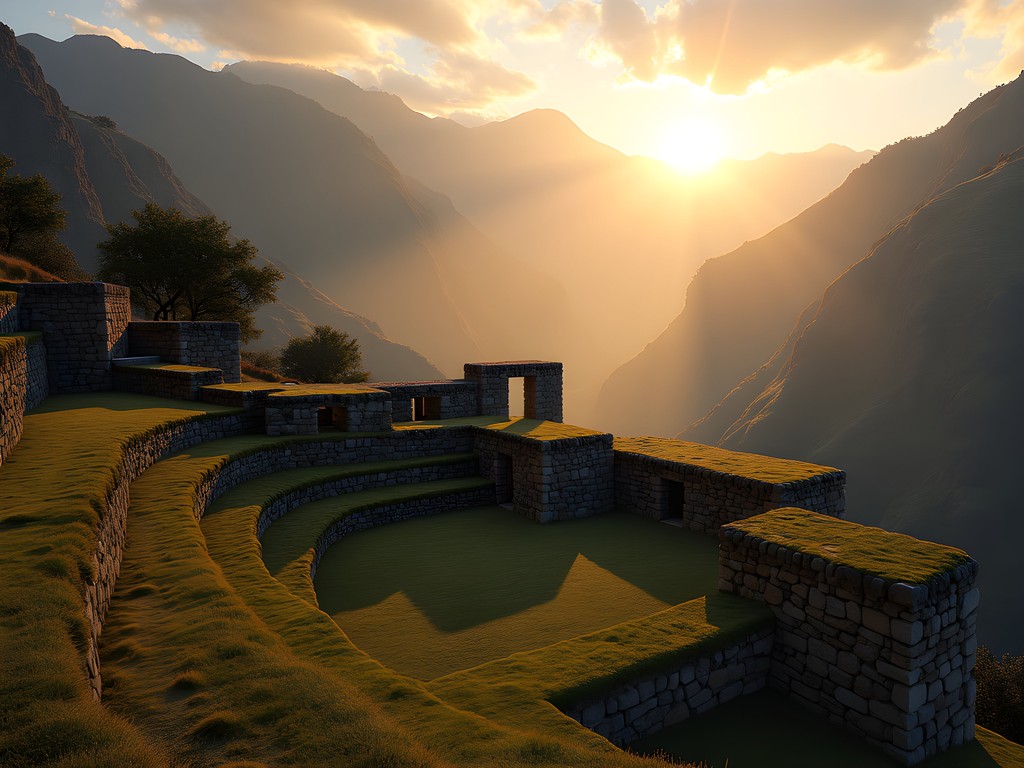
💡 Pro Tips
- Start early to avoid afternoon rain showers common in fall
- Bring at least 2 liters of water—there are few reliable sources on the trail
- Learn the Spanish phrase 'Cuándo sale el próximo colectivo?' (When does the next shared van leave?)
Lares Trek: Hot Springs and Highland Communities
While tourists flock to the classic Inca Trail, old hands like myself head for the Lares region. This three-day trek winds through remote Quechua communities where children still herd alpacas and women weave textiles using techniques passed down for centuries.
Unlike my usual solo adventures, I joined a small group for this one—safety in numbers when you're crossing 4,500-meter passes. Our guide, Eduardo, had grown up in these mountains and knew every shortcut and weather pattern. When I mentioned my bus-driving background, he laughed and said, 'Here, the only public transport is by foot or hoof!'
The highlight came on day two when we crested Ipsaycocha Pass. The panorama stretched from snow-capped Veronica to the distant green valley below. My compact binoculars brought distant condors into view—worth their weight in gold for wildlife spotting and far more packable than the bulky pair I lugged through New Zealand last year.
Each night, we stayed in basic lodges in highland villages, where we shared meals with local families. In Huacahuasi, after a particularly grueling day of hiking, we soaked our weary bones in natural hot springs under a blanket of stars. For this 64-year-old frame, those mineral waters were better than any five-star hotel amenity.
The trek ends in Ollantaytambo, where you can catch the train to Aguas Calientes if Machu Picchu is still on your list. But honestly, after experiencing the authentic Andes on the Lares Trek, the famous site felt almost like an afterthought.
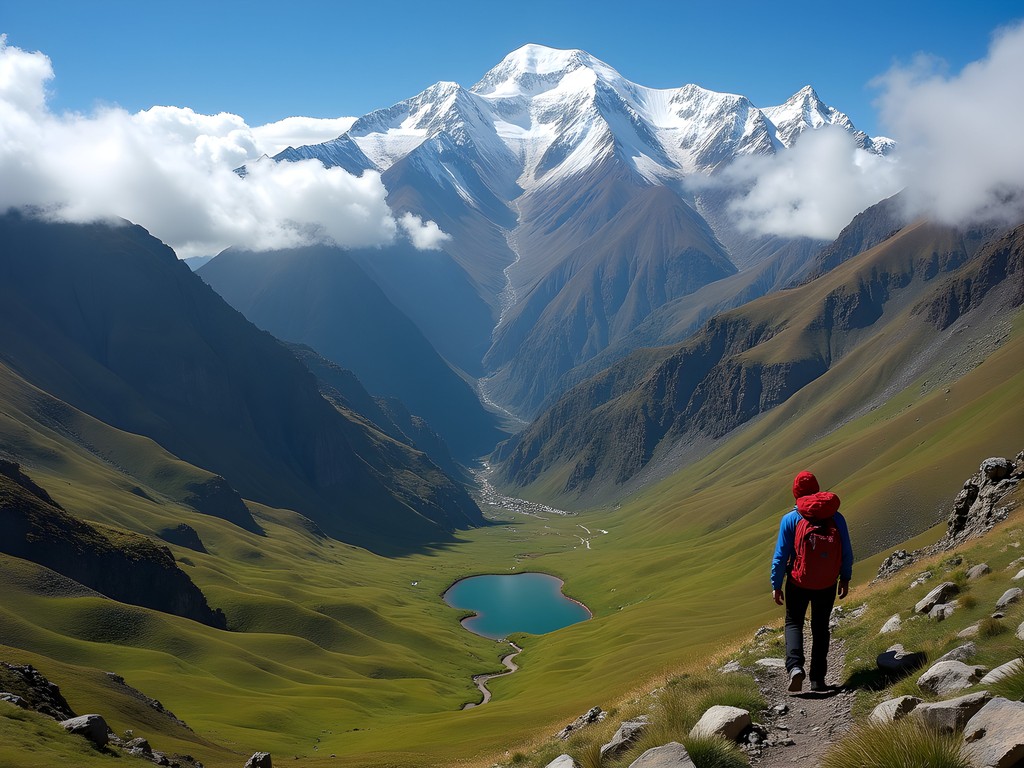
💡 Pro Tips
- Book the Lares Trek with a local operator in Cusco—you'll pay half what the international companies charge
- Pack coca leaves to chew or make tea—they genuinely help with altitude adjustment
- Bring small gifts like pencils or notebooks for the children you'll meet in remote villages
Choquequirao: The 'Real' Lost City
If Machu Picchu is Peru's Hollywood star, Choquequirao is its reclusive sibling—larger, more remote, and visited by fewer than 20 people daily. Why? Because reaching this massive Inca complex requires a challenging two-day trek each way.
The adventure begins in Cachora, a sleepy village about four hours from Cusco by local bus. I arrived the evening before and stayed at a simple homestay for 30 soles (£6), where the family fed me a hearty soup and told stories of the 'cradle of gold'—the meaning of Choquequirao in Quechua.
Day one tests your mettle with a 1,500-meter descent to the Apurimac River, followed by an equally punishing climb up the other side. My years navigating Sydney's hilly routes hadn't prepared me for this! I camped at Chiquisca, a basic campsite with cold showers but spectacular valley views.
The second day brought another 800 meters of climbing before Choquequirao finally revealed itself—stone terraces cascading down the mountainside, ceremonial platforms, and plazas spread across a site larger than Machu Picchu. And the best part? I shared it with only seven other trekkers.
My headlamp proved essential for dawn exploration before the day heated up. This rechargeable lamp has seen me through power cuts in Nepal and predawn hikes in Scotland, but illuminating ancient Inca stonework at sunrise was perhaps its finest moment.
The return journey follows the same route, though some hardy souls continue on multi-day treks to Machu Picchu. At 64, I'm not too proud to admit I chose the bus back to Cusco instead, swapping stories with the driver about the differences between navigating Andean mountain roads and Liverpool's roundabouts.
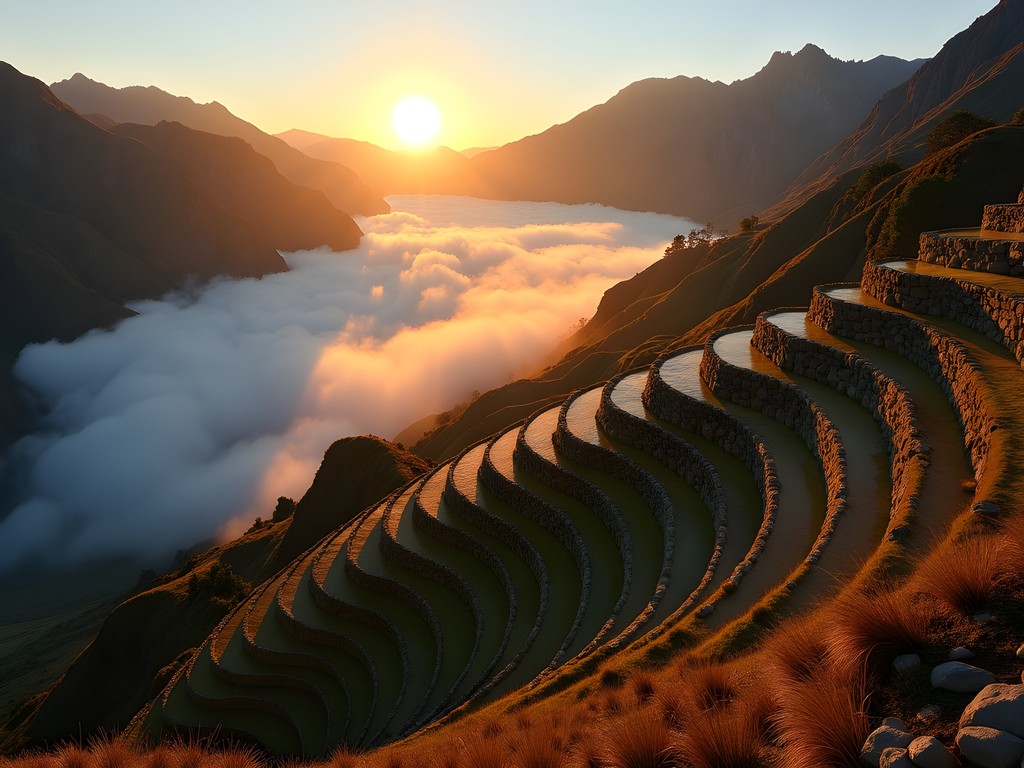
💡 Pro Tips
- Hire a mule for your backpack—your knees will thank you on those steep sections
- Book your return transport from Cachora in advance—services are limited
- The trail has no shops, so pack all food for four days (though basic meals are available at campsites)
Ausangate Circuit: Rainbow Mountains Without the Crowds
When tourists mention Rainbow Mountain (Vinicunca), they're usually referring to the Instagram-famous site that sees hundreds of daily visitors arriving on day trips from Cusco. But what if I told you there's a multi-day trek around the sacred Ausangate mountain that offers not just one, but multiple rainbow-colored peaks—and you'll have them practically to yourself?
The Ausangate Circuit is a challenging 5-day trek that circles the region's highest peak (6,384m). It's not for the faint-hearted—you'll cross three passes over 5,000 meters and camp in temperatures that drop well below freezing. But for mountain lovers like me, it's pure magic.
I started from the village of Tinqui, reachable by a three-hour local bus from Cusco. My first night, I stayed with a local family who offered me a bed and hot meal for just 40 soles (£8). The woman of the house noticed my worn pack and insisted on sewing a tear in it—the kind of hospitality that reminds you why we travel.
The circuit takes you through a landscape that feels more Himalayan than Andean—glaciers, turquoise lakes, hot springs, and those famous mineral-striped mountains. I encountered herds of wild vicuñas and local shepherds who still live as their ancestors did centuries ago.
My down sleeping bag earned its keep on this trek. When the temperature dropped to -10°C at our 4,700m campsite, I was snug as a bug while some younger trekkers shivered in inadequate gear. After 35 years of early morning bus shifts in Liverpool winters, I've learned never to skimp on warmth!
The most magical moment came on day four when we reached Palccoyo, another rainbow mountain area that sees perhaps 1% of the visitors that flock to Vinicunca. Our small group of five had the entire multicolored landscape to ourselves for hours. No queues for photos, no vendors, just the wind whistling through one of nature's most spectacular paintings.
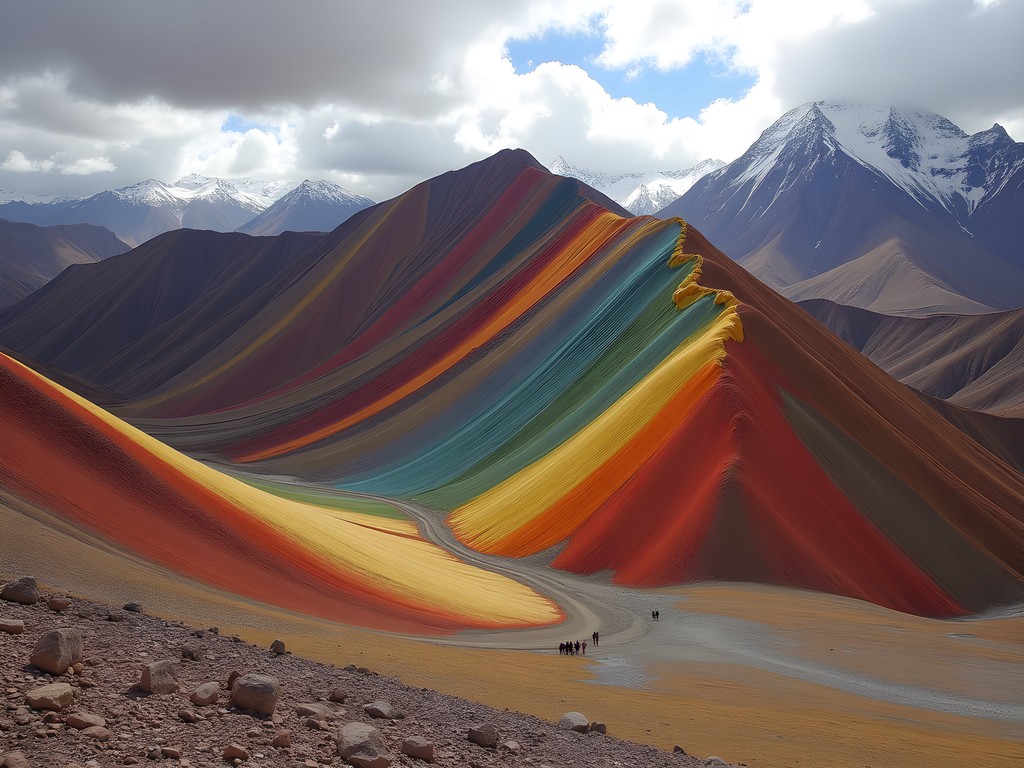
💡 Pro Tips
- Acclimatize in Cusco for at least three days before attempting this high-altitude trek
- Bring twice as many warm layers as you think you'll need—the nights are brutally cold
- Consider hiring a local guide from Tinqui—they know exactly where to camp for the best sunrise views
Salkantay to Santa Teresa: The Hot Springs Detour
The Salkantay Trek has become increasingly popular as an alternative to the Inca Trail, but most hikers follow the standard route to Aguas Calientes. What they miss is the delightful detour to Santa Teresa—home to some of Peru's finest hot springs and a more authentic slice of local life.
I started from Mollepata, catching a colectivo from Cusco's Santiago district for 20 soles (£4). The driver, noticing my interest in his route, let me sit up front where we discussed the challenges of mountain driving. His tales of navigating hairpin turns during landslide season made my Sydney bus routes seem like a Sunday drive!
The trek begins with a challenging climb toward Salkantay Pass (4,630m), where the glacier-covered peak dominates the skyline. After crossing the pass, most groups head directly toward Llactapata. Instead, I veered west toward the coffee-growing regions and Santa Teresa.
The climate shifts dramatically as you descend—from alpine tundra to cloud forest to tropical vegetation in just two days of hiking. By the time I reached the Colcamayo Hot Springs outside Santa Teresa, I'd shed most of my layers and was ready for a soak.
These natural thermal baths, set alongside a rushing river, cost just 10 soles (£2) to enter. After four days of hiking, submerging my bus driver's frame in the mineral-rich waters was nothing short of heavenly. I chatted with local families who come here weekly—a far cry from the tourist-filled springs at Aguas Calientes.
From Santa Teresa, you have options: continue hiking to Hidroeléctrica and then to Machu Picchu, or do as I did and catch the scenic train one way. The railway hugs the Urubamba River through a narrow gorge—a perspective few tourists experience. At 64, I've earned the right to mix hiking with the occasional scenic train journey!
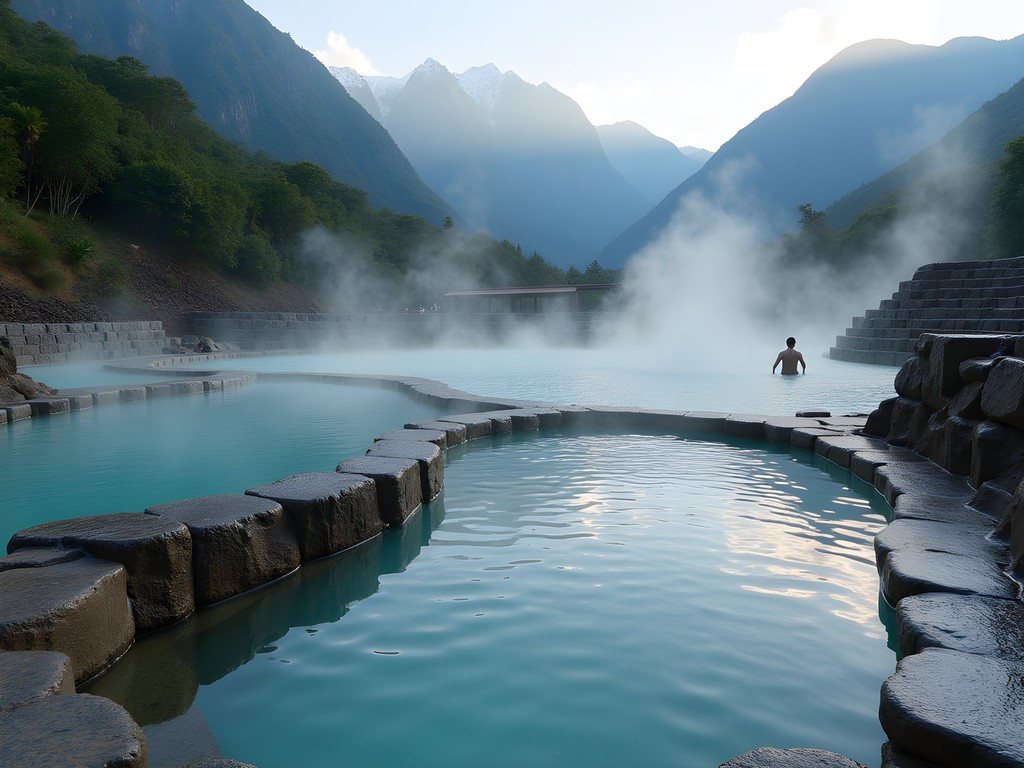
💡 Pro Tips
- Book the train from Hidroeléctrica to Aguas Calientes in advance—it often sells out
- The Colcamayo Hot Springs are least crowded in early morning or evening
- Bring cash for Santa Teresa—there are no ATMs and few places accept cards
Waqrapukara: The Horned Fortress
Some places stick with you long after you've left them. Waqrapukara—the 'horned fortress' in Quechua—is one such place for me. This little-known Inca site perched atop a distinctive mountain isn't on most tourist itineraries, which makes it all the more special.
Reaching Waqrapukara requires a bit of planning. I caught an early morning bus from Cusco to the town of Sangarará (about 3 hours), then hired a local taxi to the trailhead near Huayqui community. The driver, Jorge, was curious about my interest in the site. 'Most gringos only want Machu Picchu,' he said. When I explained I'd been driving buses for 35 years and preferred roads less traveled, he nodded in understanding—one transportation man to another.
The hike itself takes about 2-3 hours each way, crossing an undulating landscape of patchwork fields and grazing alpacas. The trail is well-marked but receives perhaps a dozen visitors on busy days. I passed just one other couple during my visit—Peruvians from Lima who were equally amazed by the site's obscurity.
As you approach, the mountain's distinctive 'horns' come into view—two natural rock formations that give the site its name. Between them sits an impressive complex of Inca stonework, including ceremonial platforms that align perfectly with the solstices. The 360-degree views across the Sacred Valley are simply staggering.
I spent hours exploring, my compact camera capturing the play of light across ancient stones. This pocket-sized powerhouse has been my faithful companion from Vietnam's mountains to Scotland's glens, and it handled the challenging contrasts of bright Andean skies and shadowed stonework beautifully.
The return journey offered a chance to chat with local farmers, who shared stories of growing potatoes at altitudes where most crops would surrender. Their weathered faces reminded me of the old-time bus drivers I'd worked with in Liverpool—people whose lives were etched into their features, one day of honest work at a time.
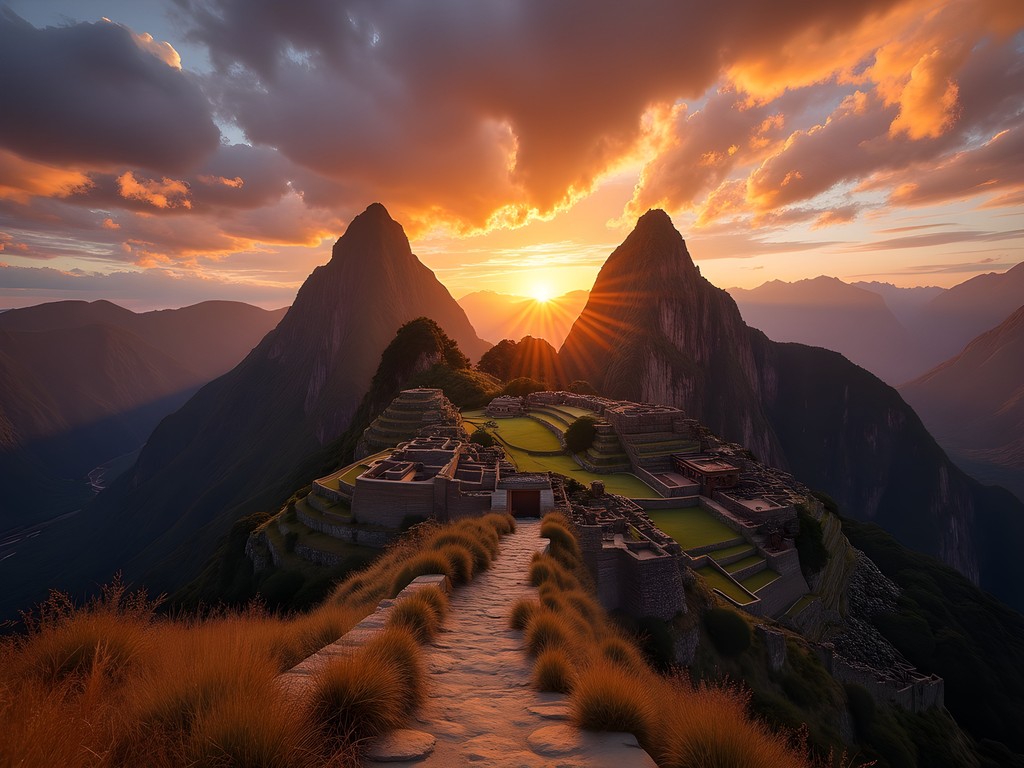
💡 Pro Tips
- Arrange your return taxi in advance—there's no public transport from the trailhead
- Bring extra water—the site has no facilities whatsoever
- Download offline maps as there's no mobile signal at the site
Inca Quarry Trail: Following Ancient Stonecutters
My final recommendation might raise eyebrows among seasoned Peru travelers: the Inca Quarry Trail. This three-day trek remains relatively unknown despite offering archaeological sites, mountain passes, and local interactions that rival the classic Inca Trail—without the permits or crowds.
The trail begins near Ollantaytambo, where massive stone blocks in the fortress walls have long fascinated visitors. But where did these monoliths come from? The answer lies along the Quarry Trail, which traces the route Inca stonecutters used to transport their precisely-cut treasures.
I joined a small group organized by a local operator in Ollantaytambo. Our guide, Wilber, was a descendant of the area's original stoneworking families and spoke with pride about his ancestors' engineering prowess. When I mentioned my interest in transportation systems, he showed me sections of original Inca road—designed with drainage systems that have outlasted many modern highways I've driven on!
The trek's highlight comes on day two when you reach the actual quarry at Cachicata. Enormous blocks lie abandoned, some partially carved—frozen in time since the Spanish conquest. You can still see the marks of tools and the ingenious splitting techniques that allowed workers to cleave granite with astonishing precision.
We camped that night near a small community where local women demonstrated traditional weaving. My travel pillow proved its worth here—after decades of bus seats, my neck appreciates proper support when camping. This compact memory foam wonder compresses small enough for any pack but expands to provide genuine comfort on hard ground.
The final day brought us over a 4,450-meter pass with views extending to distant snow-capped peaks. We descended past the ruins of Intipunku (Sun Gate) and eventually connected with the train line to Aguas Calientes. Some in our group continued to Machu Picchu, but I'd found my fill of Inca magic along the stonemasons' path—sometimes the journey to the famous site outshines the destination itself.
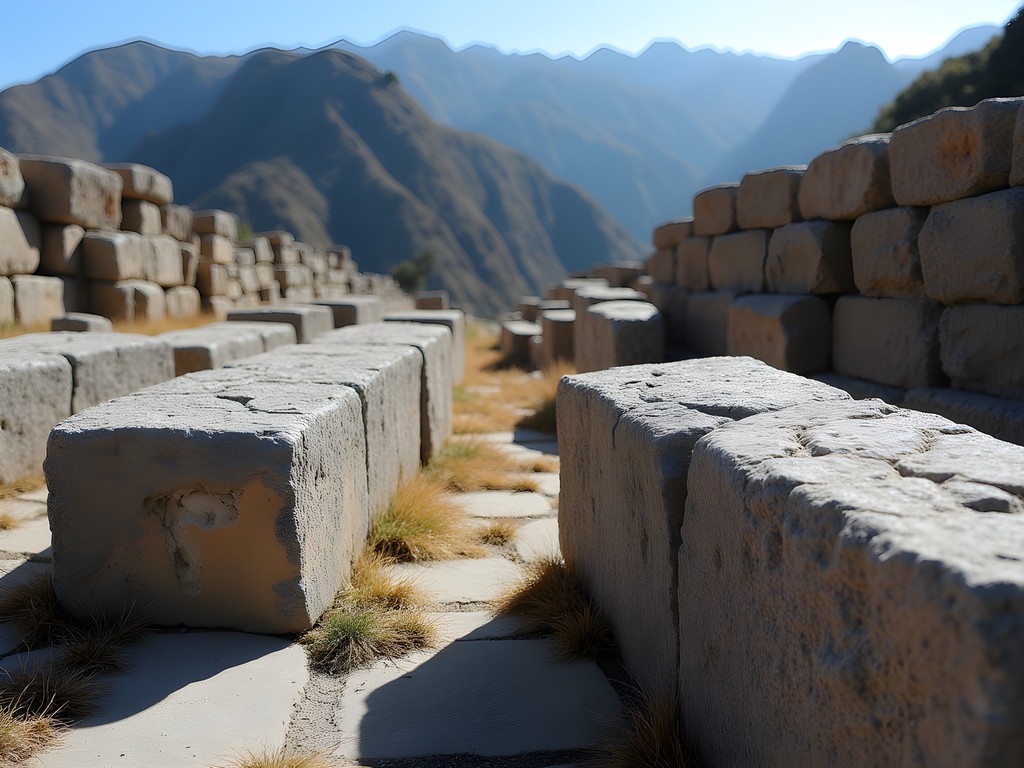
💡 Pro Tips
- Book this trek directly in Ollantaytambo for the best rates and local guides
- Visit the quarry site early in the day when the light makes tool marks more visible
- Learn a few Quechua phrases—locals along this route appreciate the effort
Final Thoughts
As I boarded my flight back to Sydney, knees aching but spirit soaring, I couldn't help but reflect on how the Sacred Valley revealed itself differently to me than to most visitors. Perhaps it's the bus driver's perspective—always looking beyond the main stops to where the real journeys begin. These seven trails offered more than just spectacular views; they provided glimpses into Peru's living history, connections with local people, and the satisfaction of earning each vista one step at a time. While Machu Picchu remains magnificent, these paths less traveled hold the true magic of the Sacred Valley. So next time you're planning that Peruvian adventure, consider stepping off the tourist trail. Pack your boots, bring plenty of water, and prepare to be humbled by mountains that have watched civilizations rise and fall. The ancient paths are waiting—and unlike the bus to Machu Picchu, they run on your schedule.
✨ Key Takeaways
- The best Sacred Valley experiences often lie beyond the main tourist sites
- Local transportation knowledge is invaluable—learn basic Spanish phrases for navigating colectivos
- Fall (September-November) offers ideal hiking conditions with fewer crowds
- Allow time for acclimatization before attempting higher-altitude treks
📋 Practical Information
Best Time to Visit
Fall (September-November) for dry conditions and fewer tourists
Budget Estimate
$75-150 per day including accommodation, food, local transport and guided treks
Recommended Duration
At least 10-14 days to allow for acclimatization and multiple treks
Difficulty Level
Moderate To Challenging Depending On The Trek (Most Require Reasonable Fitness And Altitude Tolerance)
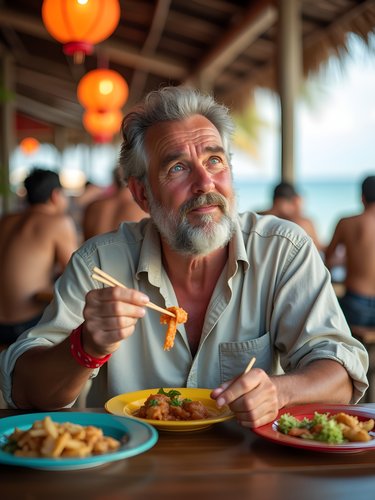
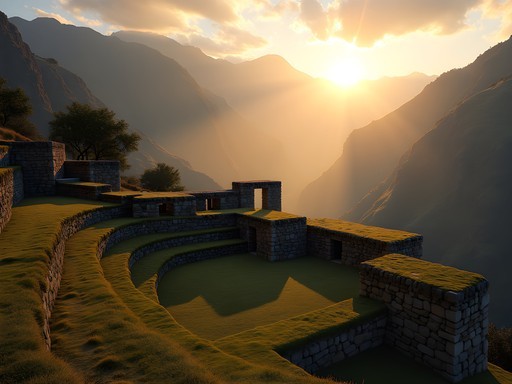







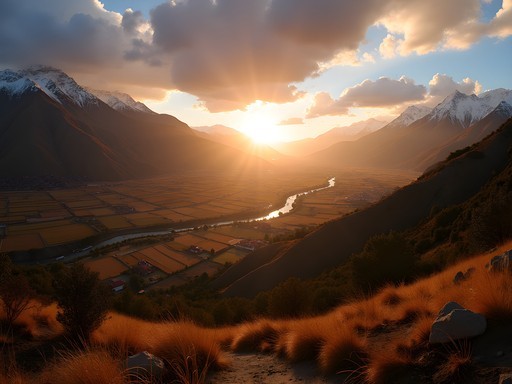



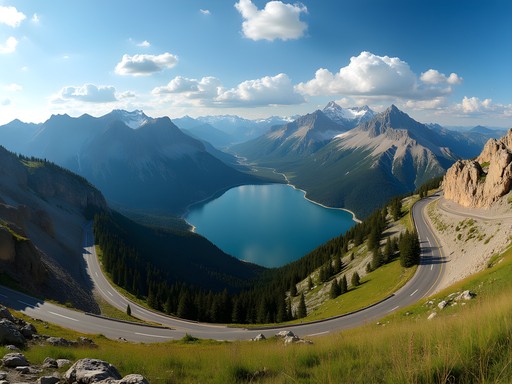
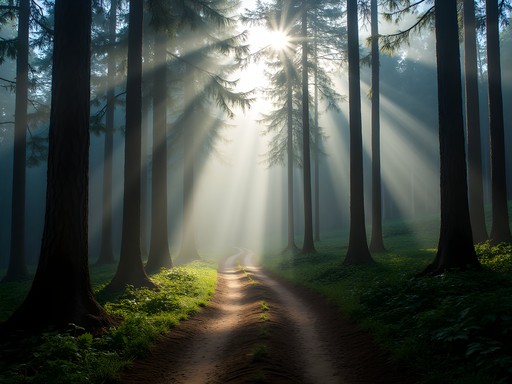
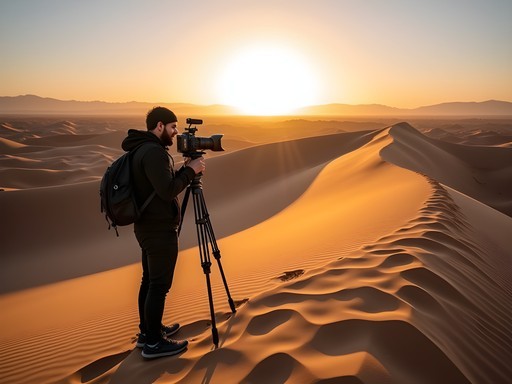
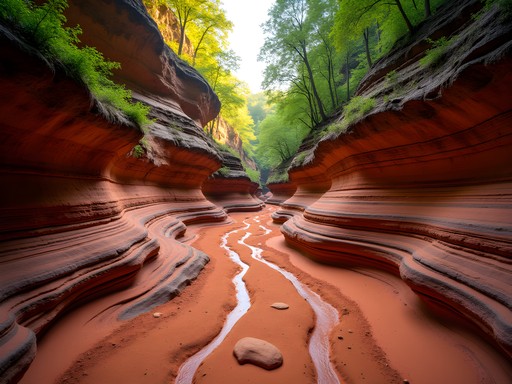
Comments
adventurequeen
Anyone know the best time of year for the Lares Trek? Trying to avoid rainy season!
Hunter Bernard
May through September is ideal - dry season with clear skies. April and October can be good too with fewer tourists, but pack rain gear just in case!
oceanseeker7985
Did the Ausangate Circuit last month and can confirm it's absolutely magical! The rainbow mountains without Instagram crowds was exactly what I needed. Brought thermal layers as Hunter suggested and thank goodness - it drops below freezing at night even in summer!
Sophia Gomez
Hunter, I unexpectedly ended up on the Huchuy Qosqo trail during a work trip extension last year. What started as a business trip to Lima turned into the most memorable part of my visit! The trail wasn't technical but those Inca stone paths were impressive. I met a local guide in Lamay who showed me ruins that weren't even in my trail guide. The panoramic views of the Sacred Valley from the archaeological site were perfect for clearing my mind after a week of meetings. Business travelers - don't just stick to the cities!
roamking
Great write-up! How difficult would you say the Choquequirao trek is compared to the classic Inca Trail? I've heard it's more strenuous but worth the effort.
Hunter Bernard
Choquequirao is definitely more challenging - it's a steep descent into and climb out of the Apurimac Valley. But you'll likely see fewer than 20 people at the ruins versus hundreds at Machu Picchu. I'd rate it as hard but incredibly rewarding!
roamking
Thanks for the honest assessment! Might need to train a bit more before attempting it, but I'm determined to see those terraces without the crowds.
Claire Hawkins
Hunter, this brought back so many memories! We took our kids (8 and 10) on the Lares Trek last summer, and it was the highlight of our Peru adventure. The hot springs were perfect after a day of hiking, and my children still talk about playing football with the local kids in those highland communities. Much more meaningful than fighting through crowds at the main sites. We found staying an extra day in one of the villages gave us time to really connect with the locals - something I'd recommend to any family travelers.
adventurequeen
Claire, did you find the Lares Trek difficult with kids? I'm planning to take my 9-year-old next spring.
Claire Hawkins
It was challenging at times with the altitude, but totally doable! Just take it slow, bring plenty of snacks, and make sure they have good hiking boots. The locals were incredibly kind to our children too!
citymate
This is exactly what I needed! Planning a Peru trip next year and wanted to avoid the Machu Picchu crowds. The Ausangate Circuit looks incredible!
Hunter Bernard
Thanks citymate! The rainbow mountains on the Ausangate Circuit are absolutely worth it. Much less crowded than the day-trip spots.
happyfan
These photos are incredible! Adding Lares Trek to my bucket list right now!
Nicole Russell
Just got back from doing the Ausangate Circuit solo with a guide (mandatory IMO) and WOW - Hunter wasn't kidding about those rainbow mountains! I went in September and had perfect weather. The altitude is no joke though - I'm pretty fit and still struggled at times. Make sure to spend at least 3-4 days in Cusco acclimating before attempting this one. The nights were freezing but waking up to those colorful peaks glowing in the sunrise made it all worth it. Also, the local communities along this route see far fewer tourists, so interactions felt much more genuine than on more popular trails. Definitely one of my top 5 treks worldwide!
dreamfan
That rainbow mountain shot is incredible! Did you really have it all to yourself like that? When I looked at tours from Cusco they all mentioned crowds.
Hunter Bernard
Thanks! That was taken around 7am on the Ausangate trek. The day-trippers from Cusco don't arrive until 11am or so. The multi-day circuit lets you see these spots at their best times!
adventureclimber
Lares Trek > Inca Trail. Facts.
Venture X
Premium card with 2X miles, $300 travel credit, Priority Pass